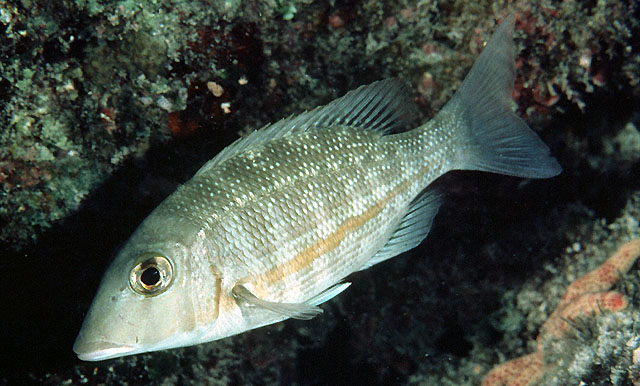| Lethrinidae (Emperors or scavengers), subfamily: Lethrininae |
| 60 cm TL (male/unsexed); max. reported age: 14 years |
|
reef-associated; marine; depth range - 30 m, non-migratory |
| Indo-Pacific: Red Sea and East Africa to the Ryukyu Islands and east to French Polynesia. |
|
Dorsal spines (total): 10-10; Dorsal soft rays (total): 9-9; Anal spines: 3-3; Anal soft rays: 8-8. The body is light tan or olive to brown, becoming lighter below. the centers of the scales are often lighter than the background color. The head, often, has several broad indistinct vertical and diagonal light and dark bands. Sometimes there are white spots below the eye. The posterior edge of the operculum is dark brown. An orange-yellow stripe is on the lower part of the side with two additional more faint orange-yellow stripes above and one below this stripe. The fins are whitish or tan, sometimes mottled. |
| Found over seagrass beds (Ref. 41878), sand and rubble areas of lagoons and reefs (Ref. 30573). Found singly or in groups (Ref. 9710). Juveniles on weedy reefs (Ref. 48635). Feed on mollusks, crustaceans, and echinoderms (Ref. 30573). One of the commonest lethrinids along the coast of east Africa (Ref. 4369). Marketed fresh (Ref. 9775). |
|
Least Concern (LC); Date assessed: 09 March 2015 Ref. (130435)
|
| harmless |
Source and more info: www.fishbase.org. For personal, classroom, and other internal use only. Not for publication.
